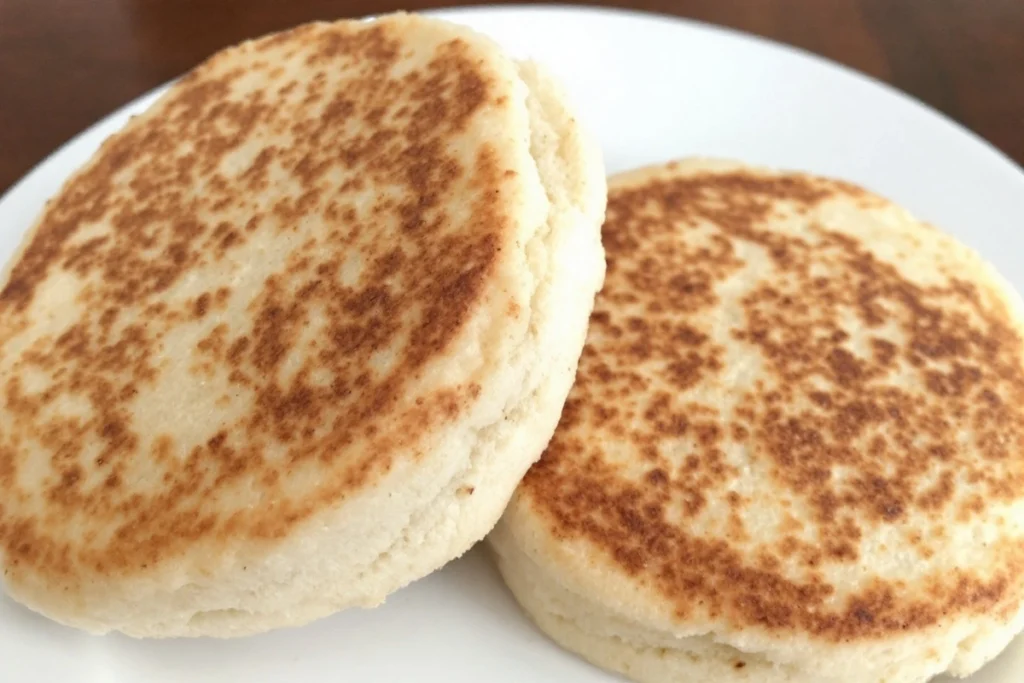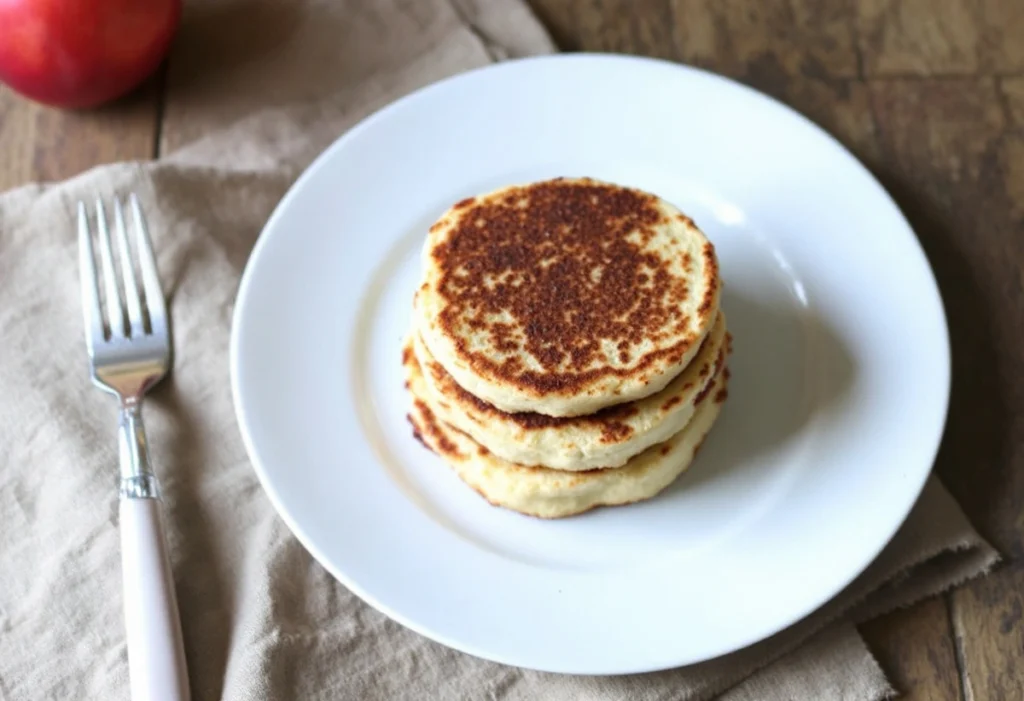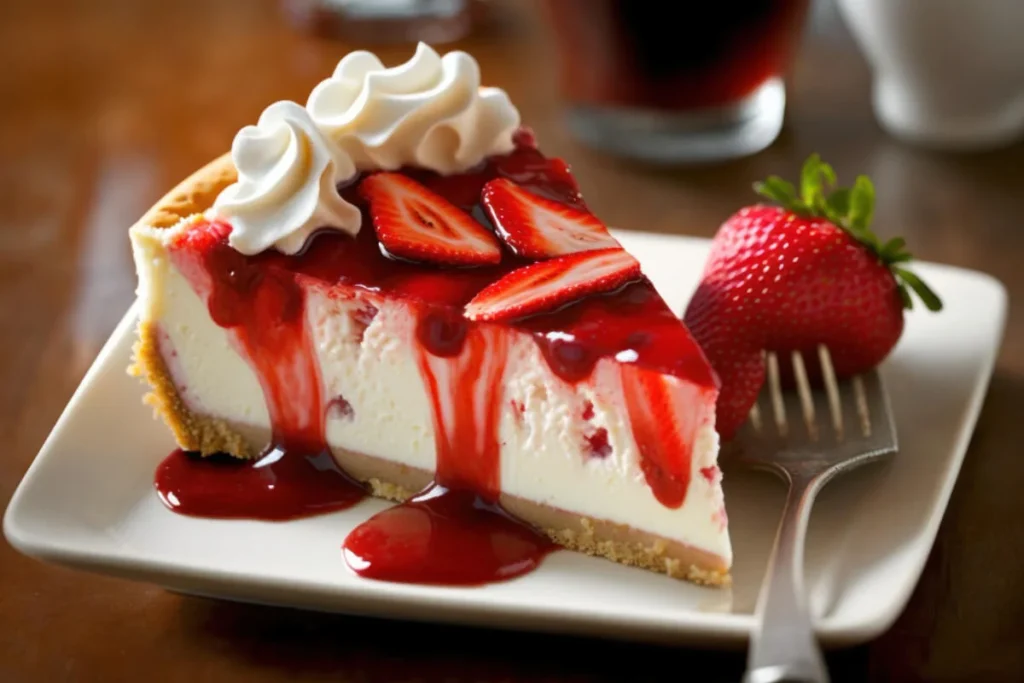
Introduction
Overview of English Muffins
Gluten Free English Muffins is a breakfast staple known for their light, airy texture and iconic nooks and crannies. Traditionally made with wheat flour, they are perfect for toasting and topping with butter, jam, or savory spreads.
How Gluten-Free Versions Differ
Gluten-free English muffins are crafted using alternative flour blends to replace wheat. These blends often include rice flour, tapioca starch, or almond flour. The lack of gluten means adjustments are necessary to achieve the soft, chewy texture typical of traditional English muffins.
Why They’re a Popular Choice for Gluten-Free Diets
With the rise of gluten-free diets due to celiac disease, gluten intolerance, or personal preference, gluten-free English muffins have become a popular alternative. They offer a satisfying option for those looking to enjoy a classic breakfast without compromising dietary needs.
Ingredients for Gluten-Free English Muffins
Gluten-Free Flour Blends: Store-Bought vs. Homemade
- Store-Bought Blends: Convenient and reliable, these blends are often designed to mimic the texture of wheat flour. Look for ones containing xanthan gum or guar gum for elasticity.
- Homemade Blends: Combine ingredients like rice flour, potato starch, and tapioca flour to create a personalized blend. Adjust ratios to suit your texture and flavor preferences.
Yeast and Baking Powder for Leavening
- Yeast: Essential for creating the airy, bubbly structure of English muffins. Allow adequate proofing time for the best rise.
- Baking Powder: Acts as a secondary leavening agent, ensuring a light texture even with gluten-free flours.
Dairy-Free and Vegan Substitutions
For those avoiding dairy or animal products:
- Dairy-Free: Use plant-based milk like almond or oat milk instead of regular milk.
- Vegan: Replace butter with coconut oil or a vegan butter alternative, and consider egg substitutes like flaxseed meal or aquafaba for binding.
Equipment Needed
Mixing Bowls and Whisk
You’ll need a set of mixing bowls in various sizes for combining the ingredients. A whisk helps ensure that the dry and wet ingredients are evenly mixed before incorporating them together.
Electric Mixer (Optional)
An electric mixer, such as a stand mixer or hand mixer, can be useful for achieving a smooth, lump-free batter, especially when working with gluten-free flour blends that can be more challenging to mix manually.
Muffin Rings or Biscuit Cutters
Muffin rings or biscuit cutters are essential for shaping the dough into uniform rounds. These tools help maintain the traditional shape of English muffins while cooking.
Griddle or Skillet
A flat, non-stick griddle or skillet is necessary for cooking the muffins evenly. These provide the direct heat needed to achieve the classic golden-brown exterior while keeping the inside soft and fluffy.
Step-by-Step Recipe for Gluten-Free English Muffins
Preparing the Dough
- Mix the Dry Ingredients:
- In a large mixing bowl, combine your gluten-free flour blend, baking powder, and a pinch of salt.
- Activate the Yeast:
- In a separate bowl, mix warm water (around 110°F/43°C) with sugar and yeast. Let it sit for 5–10 minutes until it becomes frothy.
- Combine Wet and Dry Ingredients:
- Gradually pour the yeast mixture and any additional liquids (like milk or melted butter) into the dry ingredients. Mix until a sticky dough forms.
Proofing for Light and Airy Muffins
- Cover and Rest:
- Cover the bowl with a damp cloth and let the dough rise in a warm place for about 1–1.5 hours, or until it doubles in size.
- Handle with Care:
- Gluten-free dough is more delicate than traditional dough. Avoid over-mixing to preserve the air pockets created during proofing.
Shaping and Cooking the Muffins on a Griddle
- Prepare the Cooking Surface:
- Preheat a griddle or skillet over low-medium heat. Grease the surface lightly to prevent sticking.
- Shape the Dough:
- Place muffin rings on the griddle and spoon the dough into each ring, filling it about halfway. Smooth the tops with a spatula.
- Cook Slowly:
- Cook the muffins for 7–10 minutes on each side, or until golden brown and cooked through. Flip carefully to maintain their shape.
- Cool Before Slicing:
- Allow the muffins to cool slightly on a wire rack before slicing them open to reveal the signature nooks and crannies.
Variations of Gluten-Free English Muffins
Dairy-Free or Vegan Versions
For a dairy-free or vegan twist:
- Replace regular milk with plant-based alternatives like almond, coconut, or oat milk.
- Substitute butter with coconut oil, vegan butter, or olive oil.
- Use flaxseed meal or chia seeds mixed with water as an egg substitute. These adjustments maintain the texture and flavor while catering to dietary preferences.
Whole-Grain Options with Oat or Sorghum Flour
To add a wholesome touch:
- Incorporate oat flour or sorghum flour into your gluten-free blend for a nuttier flavor and added fiber.
- Whole-grain versions pair well with savory toppings and provide a more robust texture for hearty sandwiches.
Sweetened Muffins with Honey or Cinnamon
For a sweeter variation:
- Add a few tablespoons of honey, maple syrup, or coconut sugar to the dough for a naturally sweet taste.
- Sprinkle cinnamon into the mix for a warm, aromatic twist. These sweetened muffins are delightful with fruit spreads or cream cheese.
Why Gluten-Free English Muffins are a Game-Changer
A Versatile Breakfast Option
Gluten-free English muffins are perfect for a quick breakfast. Toast them and add butter, jam, or avocado for a simple yet satisfying meal. They also serve as a great base for eggs Benedict or breakfast sandwiches.

Perfect for Sandwiches and Snacks
These muffins are not just for breakfast—they’re versatile enough to be used for sandwiches, burgers, or as a side with soups and salads. Their sturdy texture makes them ideal for holding both savory and sweet fillings.
A Safe Choice for Gluten-Intolerant Individuals
For those with celiac disease or gluten sensitivity, gluten-free English muffins provide a safe and delicious alternative. They allow individuals to enjoy a classic baked good without compromising health or flavor.
Tips for Perfect Gluten-Free English Muffins
Achieving the Right Texture Without Gluten
- Use a Blend of Flours: Combine gluten-free flours like rice flour, tapioca starch, and almond flour to mimic the elasticity and softness of wheat-based muffins. Adding xanthan gum or psyllium husk helps bind the dough and creates a chewier texture.
- Hydrate the Dough: Gluten-free dough often requires more liquid. Don’t hesitate to add extra water or milk to achieve a sticky, spreadable consistency.
Avoiding Dry or Dense Muffins
- Don’t Overbake: Gluten-free baked goods dry out quickly. Keep an eye on cooking times and remove the muffins from the heat as soon as they’re golden brown.
- Incorporate Moisture-Rich Ingredients: Add yogurt, applesauce, or oil to the batter for added moisture and to combat dryness.
Storing Muffins to Retain Freshness
- Short-Term Storage: Store cooled muffins in an airtight container at room temperature for up to 2 days.
- Refrigeration: For longer storage, refrigerate in a sealed bag or container for up to a week.
- Freezing: Wrap individual muffins in plastic wrap, then place them in a freezer bag. Freeze for up to 3 months. Reheat in the microwave or toaster before serving.
Nutritional Information
Caloric Content and Serving Sizes
- A typical gluten-free English muffin contains approximately 150–200 calories, depending on the ingredients used.
- One muffin generally serves as one portion, providing a good balance of carbs, fiber, and protein for a light meal or snack.
Adjusting Ingredients for Healthier Options
- Lower Calorie Content: Use low-fat dairy or plant-based milk alternatives and reduce added sugars.
- Increase Fiber: Incorporate whole-grain gluten-free flours like oat or sorghum flour to boost fiber and improve satiety.
- Add Protein: Include ingredients like almond flour or add a scoop of protein powder to the mix.
Comparing Store-Bought vs. Homemade Nutritional Value
- Store-Bought: Often contain preservatives, stabilizers, and added sugars. Check labels for hidden ingredients and higher sodium content.
- Homemade: Allows full control over the ingredients, making it easier to create a healthier version with fewer additives and tailored to your dietary needs.
Serving Suggestions
Classic Pairings: Butter, Jam, or Honey
Enjoy gluten-free English muffins with simple, classic toppings like:
- Butter: Spread a generous layer of butter for a rich and comforting flavor.
- Jam or Preserves: Add your favorite fruit jam for a sweet and fruity touch.
- Honey: Drizzle with honey for natural sweetness and a hint of floral notes.
These traditional pairings highlight the muffins’ soft, chewy texture and slightly crisp edges.
Using for Breakfast Sandwiches
Transform your gluten-free English muffins into hearty breakfast sandwiches by layering:
- Eggs: Scrambled, fried, or poached.
- Protein: Bacon, sausage, or plant-based alternatives.
- Cheese: Melted cheddar, Swiss, or dairy-free options.
Add avocado or leafy greens for extra nutrition and flavor.
Creative Toppings and Spreads
Elevate your muffins with unique toppings and spreads, such as:
- Nut Butters: Peanut, almond, or sunflower butter for a protein-packed snack.
- Avocado Mash: Combine mashed avocado with a sprinkle of salt, pepper, and chili flakes.
- Savory Spreads: Use hummus, pesto, or cream cheese for savory indulgence.
Storing and Freezing Gluten-Free English Muffins
Best Practices for Refrigeration
- Store cooled muffins in an airtight container or resealable bag in the refrigerator for up to 5–7 days.
- Place a piece of paper towel in the container to absorb excess moisture and prevent sogginess.

Freezing for Long-Term Storage
- Wrap Individually: Wrap each muffin in plastic wrap or parchment paper to prevent freezer burn.
- Use a Freezer Bag: Place wrapped muffins in a freezer-safe bag and remove as much air as possible.
- Storage Time: Gluten-free muffins can be frozen for up to 3 months. Label the bag with the date for easy tracking.
Reheating Tips to Retain Texture
- Microwave: Heat a frozen muffin on low power for 20–30 seconds.
- Toaster or Oven: For a crispier texture, toast or bake the muffins at 350°F (175°C) for 5–7 minutes.
- Avoid Overheating: Reheat only until warm to maintain their soft, airy interior.
Frequently Asked Questions (FAQs)
Can I Make Them Without Yeast?
Yes, you can make gluten-free English muffins without yeast by using baking powder or baking soda as a leavening agent. While they won’t have the same airy texture as yeast-based muffins, they will still rise slightly and have a tender crumb. A combination of baking powder and an acid, like lemon juice or vinegar, can improve the rise.
What’s the Best Gluten-Free Flour to Use?
The best gluten-free flour depends on personal preference and availability, but popular options include:
- All-Purpose Gluten-Free Flour Blends: These often contain xanthan gum or guar gum, which help mimic the structure of wheat flour.
- Rice Flour and Starch Mixes: Provide a light and neutral base.
- Almond Flour or Oat Flour: Add flavor and nutritional value but work best when combined with starches like tapioca or potato starch.
Can I Make Them Vegan?
Yes, you can easily make vegan gluten-free English muffins by using plant-based substitutes:
- Replace Milk: Use almond milk, oat milk, or another plant-based option.
- Replace Butter: Use coconut oil, olive oil, or vegan butter.
- Replace Eggs: Use flax eggs (1 tablespoon flaxseed meal + 2.5 tablespoons water) or aquafaba as a binder.
How Long Does It Take to Cook?
Cooking gluten-free English muffins on a griddle or skillet typically takes 7–10 minutes per side over medium-low heat. The exact time depends on your stovetop and the thickness of the muffins. Keep an eye on the color; they should be golden brown when ready.
Can I Bake Instead of Griddle?
Yes, you can bake gluten-free English muffins if you prefer. Preheat the oven to 350°F (175°C) and bake them in muffin rings on a lined baking sheet for 18–22 minutes, or until they are firm and lightly golden. You can finish them with a quick toast in a skillet for a more traditional texture.
Gluten-Free English Muffins Around the World
How Different Cultures Adapt This Recipe
While English muffins are a Western classic, other cultures have embraced gluten-free adaptations of similar baked goods:
- Asia: Rice flour-based muffins or steamed buns offer a soft, gluten-free alternative inspired by traditional rice cakes.
- Europe: Gluten-free crumpets or scones have gained popularity, providing a regional spin on tea-time favorites.
- Latin America: Cornmeal and masa harina are used to create muffins or flatbreads reminiscent of arepas, blending local flavors with English muffin characteristics.
Regional Twists and Variations
- Middle Eastern Influence: Adding spices like za’atar or sumac for a savory twist.
- Indian Fusion: Incorporating lentil or chickpea flours for a protein-rich variation.
- Mediterranean Touch: Enhancing the dough with olive oil and herbs like rosemary or oregano for a flavorful option.
Popularity of Gluten-Free Baked Goods Globally
The global rise in gluten-free diets has fueled the demand for innovative recipes. Gluten-free English muffins are now widely available in supermarkets and bakeries, proving their versatility and universal appeal. Their adaptability to various cuisines further cements their popularity.
Conclusion
Recap of Their Versatility and Simplicity
Gluten-free English muffins offer a deliciously simple way to enjoy a classic favorite without gluten. Whether paired with traditional toppings, transformed into sandwiches, or given a cultural twist, their versatility shines.
Encouragement to Try Making Them at Home
Homemade gluten-free English muffins allow full control over ingredients, ensuring a tailored experience for your dietary needs and taste preferences. With a little practice, they can be a staple in your baking repertoire.
Gluten-free English muffins are a versatile and satisfying alternative to traditional recipes, offering the same delicious nooks and crannies perfect for butter, jam, or savory toppings. Crafted with gluten-free flour blends and innovative techniques, these muffins are a game-changer for gluten-intolerant individuals and those seeking healthier options. For a variety of gluten-free baked goods and creative recipes, visit Org Recipes and explore their comprehensive collection of inspiring ideas. Whether for breakfast, sandwiches, or snacks, these muffins are a must-try!
Viral Tuna Salad: 5 Bold Reasons Matthew McConaughey’s Recipe Wins
Healthy Homemade Chicken Mortadella
Chicken Mortadella changed my deli game forever. I used to stare at processed meat…
The BEST Taco Pasta
When I’m short on time and need to get a satisfying dinner on…
Classic German Kartoffelpuffer Recipe (Authentic, Crispy & Easy to Make)
Easy Butter Pecan Cookies Recipe
There’s something undeniably comforting about the scent of buttery, nutty cookies wafting from…
Perfect Strawberry Cheesecake Recipe
If there’s one dessert that’s guaranteed to silence a lively room, it’s this…






